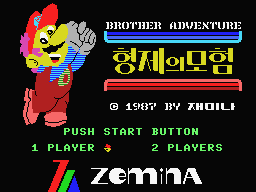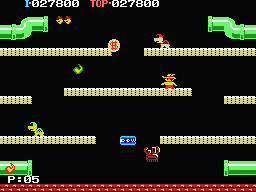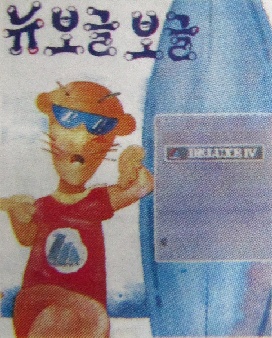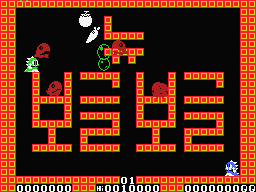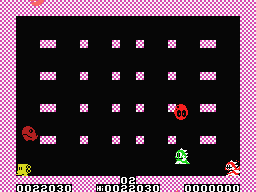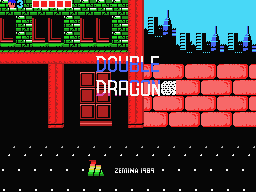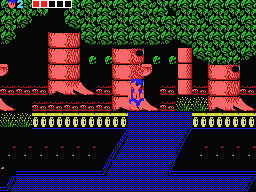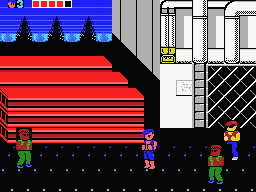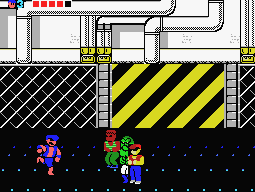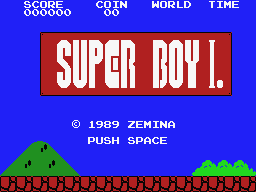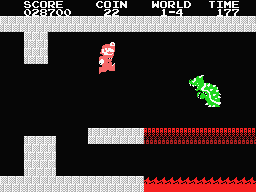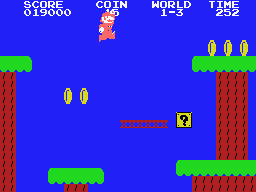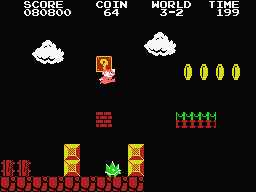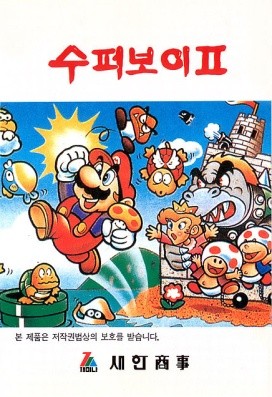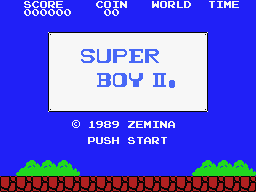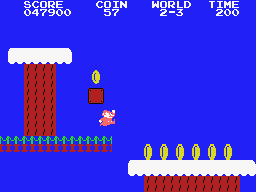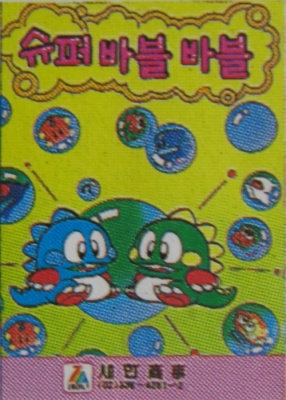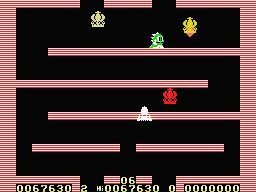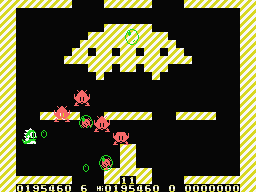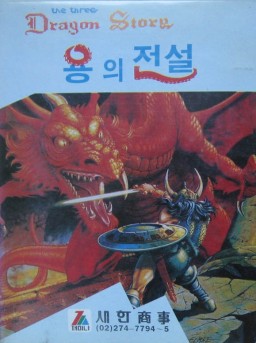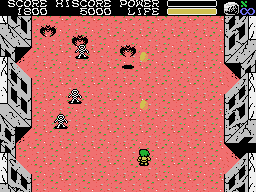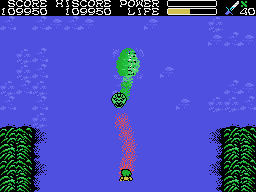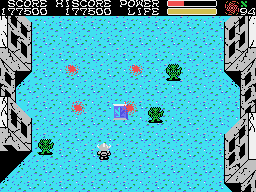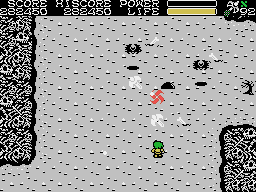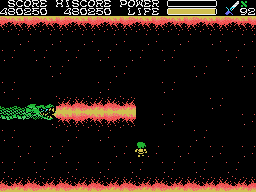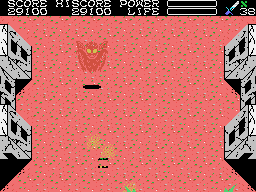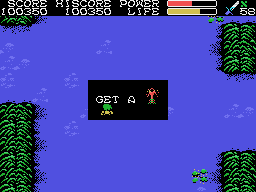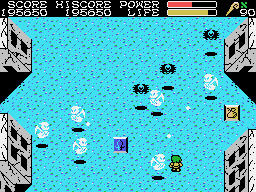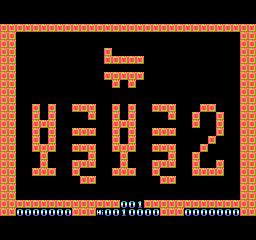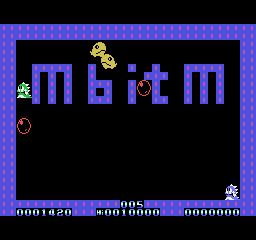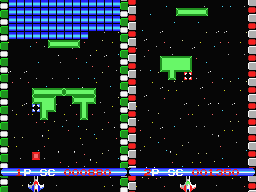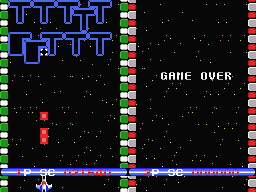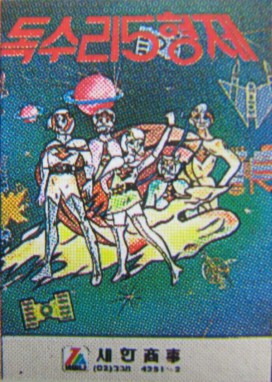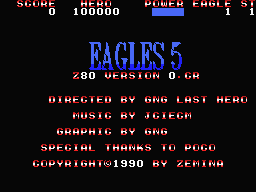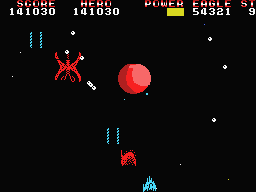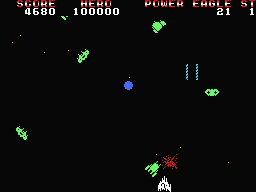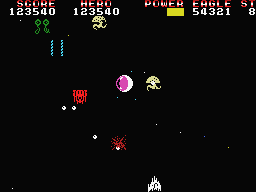A History of Korean Gaming
|
<<< Prior Page |
|
Zemina: |
재미나 Zemina / 새한상사 Saehan Sangsa

|
Founded: |
19871 |
|
Status: |
defunct (ca. 1992) |
|
Key People: |
鄭鉉水 정현수 Jeong Hyeonsu: |
|
Website: |
none |
Born out of the country's thriving bootleg industry, Zemina (the name can be read as "It's fun!" in Korean) started distributing copies of Japanese MSX games, and even went on to release several under official license after the software protection law was enacted, including Panasoft's Ashguine, Falcom's Drasle Family and Konami's Nemesis 3 (as Salamander 2), all the while still selling pirate copies of the Japanese pre-1987 games. Like many companies at that time, their endeavors weren't limited to software products, but they also manufactured a number of accessories. Their catalogue included cartridge port divider modules, a MSX music cartridge, RAM expansions and a Famicom-to-MSX converter.
At the same time, Zemina also became one of the first companies to also steadily release domestically programmed games. Most of these were still ports or reinterpretation of known games, like Super Mario Bros. or Tetris, but in later years their games became more and more independent of their archetypes, even though they never quite managed to emancipate themselves completely from other companies' materials. The games were developed by at least three different teams: Lead developer Kim Eulsuk and Koo Eunjoong were responsible for Brother Adventure and the Super Boy series, Lee Kyuhwan and Lee Sanghun did Double Dragon and The Three Dragon Story. Finally, team MbitM under Jeong Chanyong created the Bubble Bobble variants and Micro Xevious. Several games do not contain any credits at all.
In July 1988, Zemina was incorporated as a stock company.2 President Jeong Hyeonsu passed away within the next few years,3 whereafter the Zemina brand and employees were taken over by an enterprise called Saehan Sangsa.
There have been and still are literally dozens of businesses that go by the name Saehan Sangsa in Korea, so it is quite impossible to secure any more information about it. The company's CEO apparently was one Bang Junseok, although the copyright for all later Zemina games was registered in the name of one Kim Yeongjeong.4
In July 1990, Saehan Sangsa first exported a number of games, ram slot expansions and music add-ons in value of reportedly US$70,000 total to a Netherlands-based distributor called Centrum.5 Later the MSX Club Gouda also imported Korean cartridges, mostly by Zemina. The games were sold in humble quantities in Europe, though.6
While Zemina was an MSX developer first and foremost, most of the titles were later converted to the Samsung Gam*Boy / Master System. Early in 1992, the company published its first game made specifically for Famicom compatibles with Magic Kid Googoo, but shortly thereafter, most of Zemina's programmers left the company to form Open. It appears like Saehan Sangsa broke apart at that time, although the Zemina name lived on for a while in some of the former store branches. The final game with the Zemina label, the Master System exclusive Super Boy 4, was independently released by the Zemina Gametown store at the end of 1992.7 It is not known whether it was a belated release of a leftover completed earlier or an outsourced job.
Games
형제의 모험 (Hyeongjae-ui Moheom) / Brother Adventure - MSX (December 1987)
Brother Adventure (MSX)
Zemina's first game is basically Mario Bros. for the MSX. The sprites are all redrawn and the characters renamed, so Titan is conquering the sewer with his brother Gamma. All the enemy types, levels and bonus rounds are in, but flickering is even worse than on the NES. Mario's trademark skidding is missing in this version, which makes it somewhat more playable, but physics behaviour is a little odd, to say the least. The best thing about this version is that music is played during the levels, where Mario Bros was rather silent.
뉴 보글보글 (New Boggle Boggle) - MSX (May 1988)
Cover
Taito's Bobble Bobble was actually officially ported to the MSX, but because of it's sheer popularity in Korea, Zemina tried it with their own version. New Boggle Boggle is a remix with completely new levels, but the execution is all kinds of bad. The dragons get constantly stuck in the environment, enemy behaviour is broken and enemies get free from the bubbles much too fast. There's also a lot of missing features, like the EXTEND letters and various special items. Worst of all, the music sounds like an elementary school student tried to imitate the melody on a carillon.
New Boggle Boggle hasn't been developed by Zemina's internal developers, but rather a team called MbitM, which should carry on to contribute games published under the Zemina label, until they turned into the PC developer Namu Software.
더블 드라곤 (Double Dragon) - MSX (January 1989)
After their first few releases, Zemina seemingly became bold enough to use the games' official names for their ports. Double Dragon is one of their technically weaker early programs. The enemies all have a neat black box around their heads and move about as smoth as the digits on a digital watch. The game has only three types of foes, a bright skinned guy, a dark skinned guy and green Abobo. There's not even a proper final boss, just another Abobo who takes hundreds of hits. The moveset is converted properly, though some maneuvers like throwing are a bit tricky. Very rarely enemies drop a throwing knife, which is the only available weapon. Everything wouldn't be too bad if it weren't for the extremely annoying AI for enemies, who always sneak around areas the player can't reach.
Interestingly enough, this game was not created by Zemina's former staff, but it seems they now hired Lee Kyuhwan (art design) and Lee Sanghun (programming), who had made their first experiences with Legendly Knight and eventually went on to lead the Kingdom Under Fire series to fame more than 15 years later.
The artwork for the box was ripped from Jaleco's Famicom Disk System fighting game Fuun Shaolin Ken.
슈퍼보이 I (Super Boy I) - MSX, Master System (January 1989)
Zemina's take on Super Mario Bros. On the first four worlds of that game, to be precise. It seems the 32KB roms Zemina used had become to small for the full game (Super Mario Bros itself has only 6KB more, but the missing level data would have taken much less space as the graphics). But that's not the only thing amiss. Instead of being greeted in every castle by a mushroom with the legendary words 'Thank you Mario, but (...)', there's just an empty room with the statement "Sorry Nothing". The princess herself is missing as well.
A lot of gameplay mechanics also don't work quite the same as in the original, whether it was because of the incapability of the MSX, the programmer or just the limited cartridge space. Elevators are no simple platforms that start falling down when stepped on, there are no Water levels, and all the little secrets that gave the game its charme to begin with, like warp zones, bonus levels and entering pipes aren't implemented at all. Powerup distribution is much more harsh, as the blocks that are supposed to hold them are subject to a random generator as well.
All things considered, the whole program feels more of a consolation attempt for Zemmix owners than a full-fledged port.
슈퍼보이 II (Super Boy II) - MSX, Master System (January 1989)
Cover
This game is to Super Boy I what the Japanese Super Mario Bros. 2 (Known in the west as The Lost Levels) is to the first game by Nintendo, or even less so, as the evil mushroom isn't implemented. Once again the game ends after stage 4, with no such thing as an ending.
Super Boy II is the first Zemina game that is confirmed to have received a Master System conversion. As both machines had a similar system architecture, MSX games could be easily converted to the Sega system. There was no actual porting work done, so the game is virtually identical on both platforms.
슈퍼 버블버블 (Super Bubble Bobble) - MSX, Master System (September 1989)
Cover
Basically the same deal as New Boggle Boggle, only with new levels. Or rather old levels, as they're ripped off straight from the original this time. Enemy arrangement is different, though, and it has the same flaws as the first port.
용의 전설 (Yong-ui Jeonseol) / The Three Dragon Story - MSX, Master System (October 1989)
Gam*Boy Cover
At first look this seems to be a clone of Konami's Knightmare, but it is vastly improved upon on every aspect but one. Damn, this could have been such an awesome game for the MSX.
The graphics are all new, though some still betray their inspiration, like the hero's helmet, that is a powerup here. There's ten weapons and various other items to be found in initially invisible boxes, that need to be discovered by shooting at them. Multiple weapons can be carried at the same time and swapped through when needed.
There's various types of enemies, cool looking bosses and stages. Other than in Knightmare, the player gets a health bar that makes him resistent to about four or five hits. There's also a power bar that can be upgraded to increase the weapons' power, but every enemy hit draws from it much more rapidly than from the life bar.
So what's the catch? This game is beyond hard. It puts Nintendo Hard, Retro Hard, and any other thinkable kind of hard to deep shame. Anyone who can ever beat even the first boss without using cheats may be legitimately called a god. Bullet hell years before the term was coined, the enemy takes about a hundred hits, grows fast as the Roadrunner towards the end, and every single failed attempt leads back to the very beginning, such a thing as extra lives or continues don't exist in this game.
Too bad about what could have been a rather awesome shmup. Another one developed by the duo Lee Kyuhwan / Lee Sanghun. Makes one wonder what has driven them to this kind of "balancing".
The title artwork might be familiar to long time players of Dungeons&Dragons, as it is ripped straight from the Basic Rules book (12th to 14th print)8.
삼각의 비밀 (Sagak-ui Bimil) / Block Hole - MSX, Master System (1990)
Block Hole (Master System)
Block Hole is something special in the Zemina library. Released in 1990, they were practically racing Konami for the port of their Tetris-Shooter Quarth. However, while Konami long since had switched to the MSX2, Zemina's bet was on the first revision of the computer. Naturally, graphics and sound are vastly superior in the official port, and the controls are more responsive, but the Zemina version was not without merits. It featured an additional 2 Player mode, where both players could disturb each other by decreasing the size of the opponent's playing field. The gameplay itself is similar, although on the MSX1, it is not uncommon to lose because of the controls.
독수리5형제 (Doksuri 5 Hyeongje) / Eagles 5 - MSX, Master System (July 1990)
Cover
Around 1990 developers were getting the hang of MSX programming it seems, and some very solid games were created that year. Eagles 5 won't win any beauty contests, but it makes great use of the machine's capabilities. There's alway going on a lot on the screen, everything moves smoothly, and while there are occasional slowdowns and flickerings, both are kept to a minimum. There's also a ton of different enemy types, from mechanic to biologic to geometric ones. The unchanging space background with the planet in the middle gets a bit boring, though.
Not only does the game know what it can demand from the MSX1, but also what to expect from the player. The game is hard, but not inhumanly so. Enemies don't spare any bullets and attack in whole squadrons at a time, but the player's ship is protected by a rechargeable shield, and with the right amount of speed upgrades, dodging is a piece of cake. The bosses are almost too easy, and despite their individual sprites, they all act more or less the same.
The games is named after the Korean title of the anime series Gatchaman and uses the show's characters for the title art, but ingame it refers to the five levels the ship's weapons can be upgraded in. Any hit downgrades the weapon systems, only in the fifth and last stage they're locked in until the ship is destroyed. As with The Three Dragon Story, losing just once immediately ends the game.
The game is credited to the cryptic abbreviation GNG, which doesn't seem to have been decoded, yet. Reportedly, the game was also developed by MbitM.
References
1. On page 41 of Computer Hakseup 10/1987 the founding year is given as 1981, but considering the time frame in which the industry came into being, the lack of any recorded activity before 1987 and the fact that the trademark for the Zemina logo was registered in May 1987, this appears to be a typographical error.
2. Advertisement in Computer Hakseup 7, page not numbered.
3. Stated by former Zemina-employee Koo Eunjoong in an email.
4. Korea Copyright Commission searches for 김영정 and 김 영 정.
5. MyCom 9/1991. Titles mentioned are The Three Dragon Story, Brother Adventure, and Puznic.
6. According to former Club Gouda member Arjan Prosman, the total amount of cartridges imported by them lay between 250-400 pieces, including bootlegged and licensed Japanese games and multi game carts, with a failure rate of up to 10%. More than 50 different cartridges were offered in the MSX Club Gouda Catalog, so the quantities per game had to be very low.
7. Game Champ 02/1993, page 39.
8. Compare the cover art gallery on The Acaceum.
|
<<< Prior Page |
|
Zemina: |
